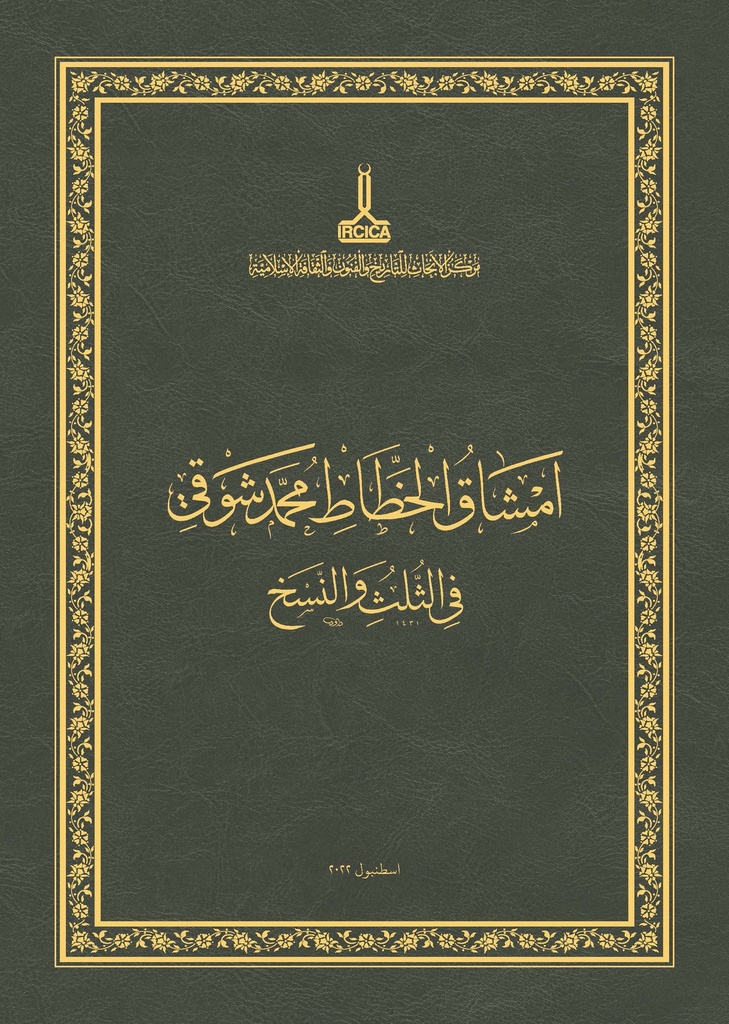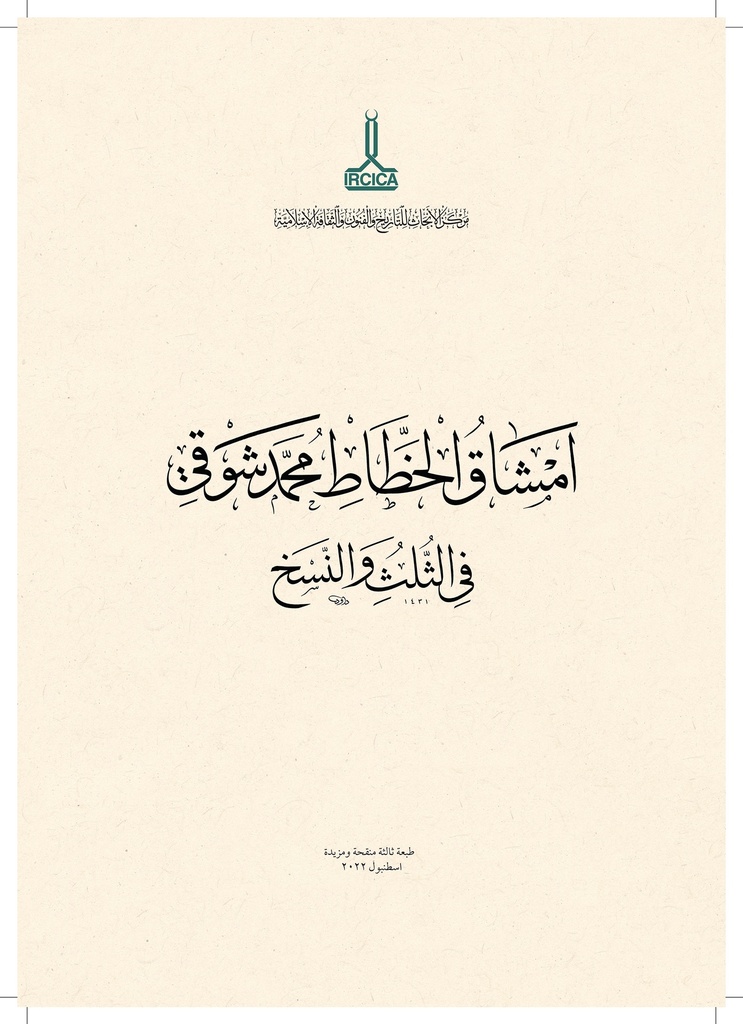The Thuluth & Naskh Mashqs by Mehmed Shawqī: Exercise Books of Islamic Calligraphy
Introductory texts: Uğur Derman; Prepared by: Said Kasımoğlu;
Istanbul: IRCICA; 2022. Islamic Cultural Heritage series; no. 6, 3rd ed., rev. and enl.; 70, [2] p., col. ill.; 30 cm.
(English, Arabic, French, Turkish)
ISBN: 9789290634041
Mehmed Shawqī received his training in calligraphy in Istanbul starting from a young age, learning thuluth, naskh, and riqa from his uncle Mehmed Hulūsi Efendi (d. 1874), and obtained his ijaza at the age of twelve. Perfecting his skills over the years, he invented a style of his own inspired by great calligraphers, including Hāfız Osman (d. 1698) and Mustafa Rākım (d. 1826), which came to be known as the “Shawqī School.” He taught calligraphy in the government school which trained military scribes and also gave private lessons to student groups, while his principal job was at the Secretariat of the Ministry of War. He calligraphed twenty-five Mushafs, as well as a great number of prayer books.
The publication contains his mashq related to mufradāt (exercises on single letters) and murakkabāt (exercises on combinations of letters) reproduced from its original preserved in the Library of Topkapı Palace Museum, followed by the mashq for murakkabāt and the Qasīda al-Alfiyya worksheet reproduced from the Ekrem Hakkı Ayverdi collection preserved in the Kubbealtı Academy Culture and Art Foundation, Istanbul. The final section presents al-Hilya al-Nabawiyya al-Sharīfa (description of the sublime characteristics of the Prophet Muhammadsaw) prepared as a mashq for murakkabāt by Mehmed Shawqī, who gave importance to learners’ practicing with this text, also reproduced from its original preserved in the Library of Topkapı Palace Museum.












